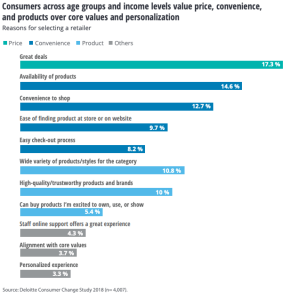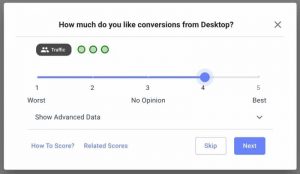— June 27, 2019
SEO metrics are a good way of assessing the performance of your website. Over the last few years, SEO has gained popularity, and with it, customer expectations have also risen. If you are still wondering what these metrics are and what they can do for your website, continue reading to find out.
Keyword Rankings:
Tracking your keyword rankings can tell you a lot about your website. We know that all search results are customized, but keyword rankings are essential due to the following reasons; while tracking the rankings of one keyword, you can determine your overall rankings. This means a good ranking for a particular keyword, which is an indicator of your website doing well. This holds true for long-tail keywords as well. Keyword rankings should be your priority as it is among the metrics that matter the most.
Organic Traffic:
The other important SEO metric is organic traffic. It is the traffic that is generated when your website appears in search engine results. An essential characteristic of organic traffic is that you do not pay for its placement. This SEO metric is critical as it tells you important information about the number of people who visit your website. Tracking organic traffic means that you can find out the number of people who see your site. This puts you in a position to judge your SEO plan and strategy. If the number of people is less than expected, then you can change your strategy and improve your website. Otherwise, all your effort can go futile. Another aspect of tracking your organic traffic is that you can find out exactly where you need improvement by monitoring the organic traffic for every page. This means that if one page is decreasing your rankings, it can be pinpointed and hence improved.
Tracking Traffic by Location:
Tracking traffic by location gives a clearer idea of the nature of the content that needs to be created, as well as the SEO strategies that must be implemented.” For all those who want to target a specific demographic, tracking organic traffic by location can be very useful. There are a few steps that you can follow while tracking your organic traffic by location. Firstly, you need to track your organic traffic by country. This will give you an idea of where your traffic is from and help you plan strategies according to the particular region. This is very important for your website as it will enable you to customize your SEO without compromising on your client base. This can also help expand your market.
Organic Bounce Rate:
Bounce rate is the number of people that moved away from your website after viewing one page. Bounce rate can be used to assess the amount of work that you need to do on your website. If your website has a low bounce rate, it is an indicator of a well-built website. On the other hand, if your site has a high bounce rate, it means that you need to improve your website. This is how vital SEO metrics are for your website.
Mobile Usability Report:
Everyone picks up their phone at least three times every five minutes. Everything is easily and conveniently done through phone then why use desktops! You obviously know this so what’s new here? When designing a website, a lot of people use their laptops and assume that it would be used on desktops. Since we have already established the utility of phones, it is essential that the design of the website is mobile friendly. A lot of times, websites end up losing many customers due to the same issue. Mobile usability report shows you the problems faced by the people while viewing your site. It even gives information about the URLs that are causing problems. Once you get the mobile usability report, you can fix the issues shown and increase the usability of your website.
Average time: how much time are users spending on your website?
This is similar to the bounce rate but it is more straightforward. As the name suggests, it is the average time that a user spends on your website. If they like your site, they stay on it for an extended period or at least some time as opposed to spending a few seconds on a minute even. Tracking the time gives you another opportunity to find out whether your website appeals to your audience or not. Moreover, checking the average time on each page separately will provide you with a more in-depth analysis of your website.
After taking the above into consideration, go ahead and analyze your site performance. The difference will be clear!
Digital & Social Articles on Business 2 Community
(26)





